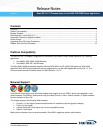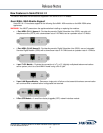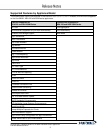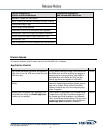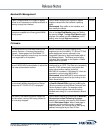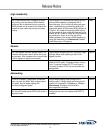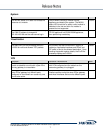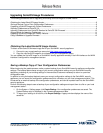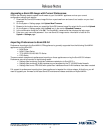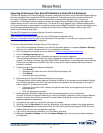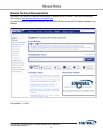
6
SonicOS 5.8.1.2 Release Notes for the NSA 220/250M Series Appliances
P/N 232-000648-00 Rev A
High Availability
Symptom
Condition / Workaround
Issue
With Active/Passive High Availability enabled
with probing, and the primary WAN interface
configured with a redundant port, the primary
WAN interface and all routes to this subnet are
marked as down when the primary port stops
working.
Occurs when HA is enabled with probing and the
primary WAN interface is configured with a
redundant port. If the link for the active port goes
down, Load Balancing (enabled by default) will
change the status of the primary WAN interface to
“Failover”. All routes to the primary WAN subnet
will be marked as down and traffic destined to the
subnet will fail. However, traffic will still succeed to
any destination that is on the far side of the
default gateway of the primary WAN interface, by
using the redundant port. Workaround: Disable
Load Balancing or HA probing.
97883
Module
Symptom
Condition / Workaround
Issue
The LAN Bypass module’s Bypass Status LED
indicates that bypass mode is active during the
boot process, then changes to the normal mode
in which bypass is ready, but not active.
Occurs when configuring an SFP module in Layer
2 Bridge Mode, then replacing it with a LAN
Bypass module.
108416
The ADSL card cannot connect in DHCP mode.
Occurs when configuring an ADSL card with the
WAN in DHCP mode. The Status mode, Point-to-
Point Tunneling Protocol (PPTP), and Layer 2
Tunneling Protocol (L2TP) do not work with this
configuration.
106473
Networking
Symptom
Condition / Workaround
Issue
On the X1 interface, 1Gbps traffic sometimes
does not reach the WAN. After configuring the
link speed, the link status displays the
previously configured speed.
Occurs when passing traffic through the X1
interface with a 1Gbps switch and forcing the X1
interface’s link speed to 1000Mbps or 100Mbps.
Workaround: Configure the SonicOS to
auto-negotiate link speed.
105890
Configuring more than one remote appliance
with a tunnel interface and OSPF could result in
dropped routes.
Occurs when an additional remote appliance is
configured with a tunnel interface and OSPF is
enabled.
102961



